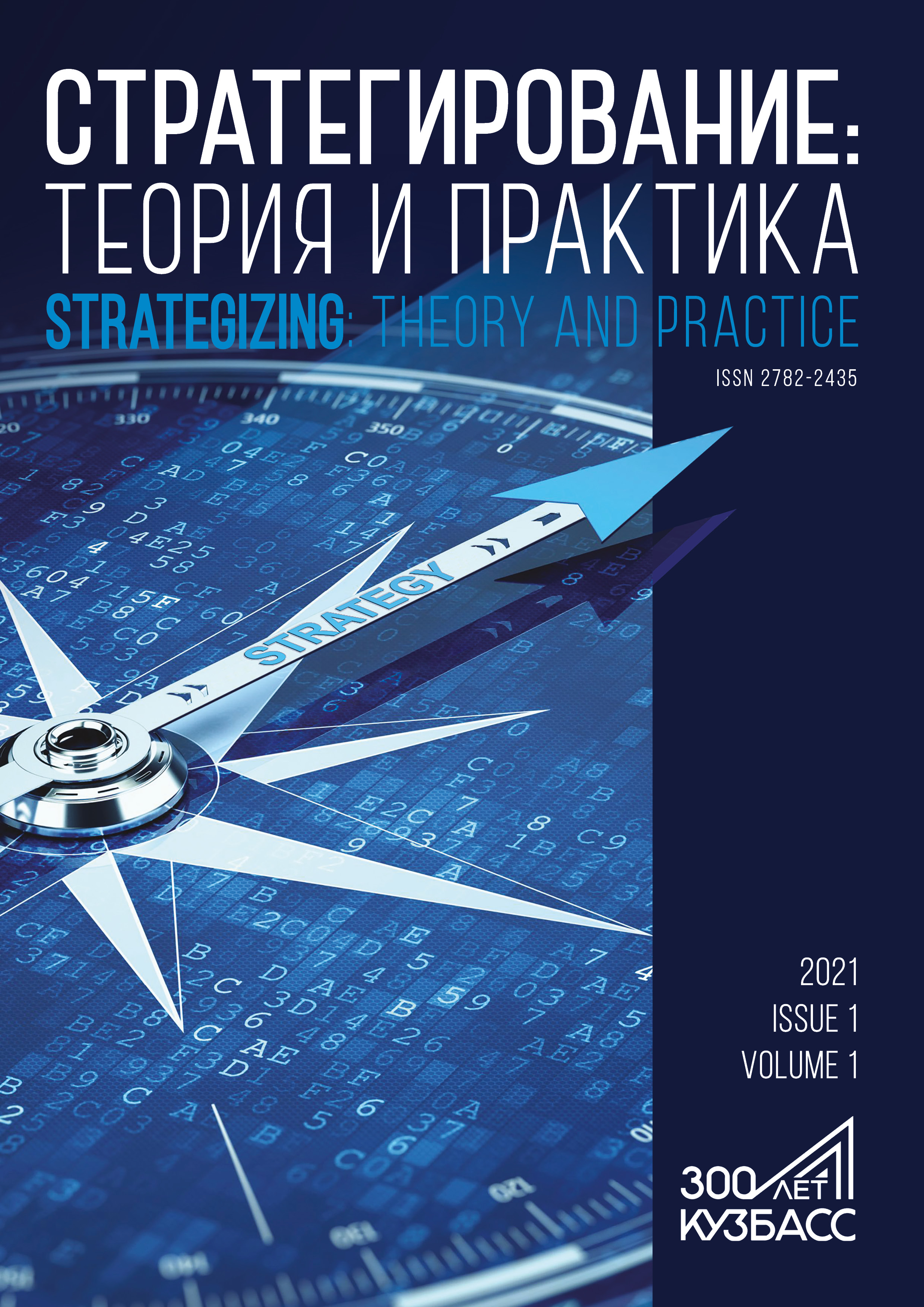Moscow, Russian Federation
Moscow, Russian Federation
Introduction. In the 1960s, the USSR and the United States raced not only in the sphere of arms and space exploration, but also in various socio-economic spheres, including advanced automated management systems in the field of economics, which treated economy as a single object of management. Study objects and methods. The present research involved declassified archival documents, as well as domestic and foreign works on automated control systems (ACS). Results and discussion. The authors analyzed the fundamental goals and objectives set by the leaders of the two superpowers, focusing on the nationwide automated processing and control systems (NAPCS), their operation principles, and the reasons behind their failure. They compared NAPCS with alternative systems, e.g. ACS-70, ACS-80, the system of the Kuntsevo radio engineering plant, ARPANET, etc., as well as with modern systems that were based on the Soviet heritage. Conclusion. Apparently, the USSR won the first part of the ACS race, but the project failed, and the USA with its ARPANET (1969) became the undisputed leader. However, most contemporary Russian situation centers are based on the Soviet studies.
nationwide automated accounting and information processing system, OGAS, automated control systems, planned economy, economic cybernetics, situational centers, cognitive centers
1. Abramov VI, Evdokimov DS. Automated economic management systems of the USSR as prototypes of modern situational centers of the Russian Federation. Regional problems of transforming the economy. 2020;117(7):13-24. (In Russ.)
2. Abramov VI, Evdokimov DS. Situation center as a mechanism of state control management: Russian and foreign experience. Regional problems of transforming the economy. 2019;108(10):21-35. (In Russ.)
3. Burilina MA, Evdokimov DS. Agent-based modeling for decision support and forecasting in the transition to the digital economy. Moscow: CEMI RAS; 2020. 148 p. (In Russ.)
4. Glushkov VM. Makroehkonomicheskie modeli i printsipy postroeniya OGAS [Macroeconomic models and principles of nationwide automated processing and control systems]. Moscow: Statistika; 1975. 160 p. (In Russ.)
5. Glushkov VM. Osnovnye printsipy postroeniya avtomatizirovannykh sistem upravleniya [Basic principles of building automated control systems]. Moscow; 1969. 36 p. (In Russ.)
6. Glushkov VM. Osnovy bezbumazhnoy informatiki [Fundamentals of digital informatics]. Moscow: Nauka; 1982. 552 p. (In Russ.)
7. Glushkov VM, Valakh VYa. Chto takoe OGAS? [What are nationwide automated processing and control systems?]. Moscow: Nauka; 1981. 159 p. (In Russ.)
8. Derkach VP. Akademik V. M. Glushkov - pioner kibernetiki [Academician V.M. Glushkov, a pioneer of cybernetics]. Kiev: Yunior; 2003. 384 p. (In Russ.)
9. Evdokimov DS. Strategic development of control systems of modern situation centers. Strategizing: Theory and Practice. 2021;1(1):89-98. (In Russ.) https://doi.org/10.21603/2782-2435-2021-1-1-89-98.
10. Zatsarinnyy AA, Shabanov AP. Effectiveness of situational centers and human factor. Moscow Witte University Bulletin. Series 1: Economics and Management. 2013;5(3):43-53. (In Russ.)
11. Ilʹin NI, Demidov NN, Novikova EV. Situatsionnye tsentry. Opyt, sostoyanie, tendentsii razvitiya [Situation centers. Experience, state, and development trends]. Moscow: MediaPress; 2011. 335 p. (In Russ.)
12. Makarov VL, Bakhtizin AR, Sushko ED, Abramov VI, Evdokimov DS. Using agent-based models to expand strategic functionality of the Kuzbass situation centers. Russian Journal of Industrial Economics. 2020;13(3):300-307. (In Russ.) https://doi.org/10.17073/2072-1633-2020-3-300-307.
13. Kvint VL. Strategizing Concept. Vol. 1. St. Petersburg: SZIU RANKhiGS; 2019. 132 p. (In Russ.)
14. Kvint VL, Trachuk AV, Dzgoev VD. Strategirovanie natsionalʹnykh i regionalʹnykh innovatsionnykh sistem: Daydzhest mirovykh praktik dlya gosudarstvennogo i munitsipalʹnogo upravlencheskogo personala [Strategy of national and regional innovation systems: Digest of world practices for state and municipal management personnel]. Moscow: Byudzhet; 2021. 199 p. (In Russ.) https://doi.org/10.34829/KARO.978-5-6046414-0-8.
15. Kitov AI. Kibernetika i upravlenie narodnym khozyaystvom [Cybernetics and national economy management]. Kibernetiku - na sluzhbu kommunizma. Tom 1 [Cybernetics at the Service of Communism. Vol. 1]. Moscow-Leningrad: Gosehnergoizdat; 1961. pp. 203-218. (In Russ.)
16. Kvint VL, Alimuradov MK, Zadorozhnaya GV, Astapov KL, Alabina TA, Bakhtizin AR, et al. A conceptual future for the Kuzbass region: strategic outlines of developmental priorities through 2071, a 50-year perspective. Kemerovo: Kemerovo State University; 2022. 283 p. (In Russ.) https://doi.org/10.21603/978-5-8353-2812-3.
17. Makarov VL, Bakhtizin AR. Modeli prinyatiya vernykh resheniy [Models of decision making]. Byudzhet [Budget]. 2018;190(10):92-96. (In Russ.)
18. Makarov VL, Bakhtizin AR, Sushko ED. Situational modeling - the effective tool for strategic planning and management. Administrative Consulting. 2016;(6):26-39. (In Russ.)
19. Malinovskiy BN. Istoriya vychislitelʹnoy tekhniki v litsakh [W is who in computing]. Kiev: KIT; 1995. 384 p. (In Russ.)
20. Malyshev SA, Mikhaylov AV, Cheremnykh EN. Bibliograficheskiy spravochnik po avtomatizirovannym sistemam upravleniya, otrazhayushchiy raboty po OGAS, RASU i zvenʹyam RASU [Bibliographic reference book on automated control systems: OGAS, RASU and its links]. Moscow; 1975. 147 p. (In Russ.)
21. Moev VA. Brazdy upravleniya: Besedy s akad. V.M. Glushkovym [Reins of management: Conversations with Professor V.M. Glushkov]. Moscow: Politizdat; 1974. 174 p. (In Russ.)
22. Sprukh V, Oleynik-Ovod YuA, Bachilo IL, Boushka I, Ganev A. Obespechenie sistem upravleniya: Informatsionno-tekhnicheskaya baza, organizatsionnye struktury, pravovoe obespechenie upravleniya narodnym khozyaystvom [Provision of management systems: Information and technical base, organizational structures, legal support of management of the national economy]. Moscow: Ehkonomika; 1984. 271 p. (In Russ.)
23. Kvint VL, Vlasyuk LI, Evdokimov DS, Azarov YuYu, Alabina TA, Aleshkovsky IA, et al. Strategizing of the digital Kuzbass region. Kemerovo: Kemerovo State University; 2021. 434 p. (In Russ.) https://doi.org/10.21603/978-5-8353-2796-6.
24. Chernyak YuI. Analiz i sintez sistem v ehkonomike [Analysis and synthesis of systems in economics]. Moscow: Ehkonomika; 1970. 150 p. (In Russ.)
25. Shevyakov AYu. Modelirovanie sotsialʹnykh aspektov narodnokhozyaystvennogo planirovaniya [Modeling the social aspects of national economic planning]. Moscow: TSEHMI; 1988. 181 p. (In Russ.)
26. Bartol KM. Soviet computer centres: Network or tangle? Soviet Studies. 1972;23(4):608-618.
27. Conyngham WJ. Technology and decision making: Some aspects of the development of OGAS. Slavic Review. 1980;39(3):426-445. https://doi.org/10.2307/2497163.
28. Gerovitch S. InterNyet: Why the Soviet Union did not build a nationwide computer network. History and Technology. 2008;24(4):335-350. https://doi.org/10.1080/07341510802044736.
29. Raikov A. Convergent networked decision - making using group insights. Complex and Intelligent Systems. 2015;1(1-4):57-68. https://doi.org/10.1007/s40747-016-0005-9.





